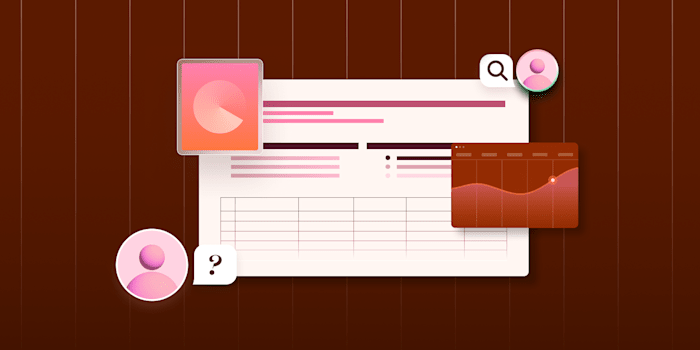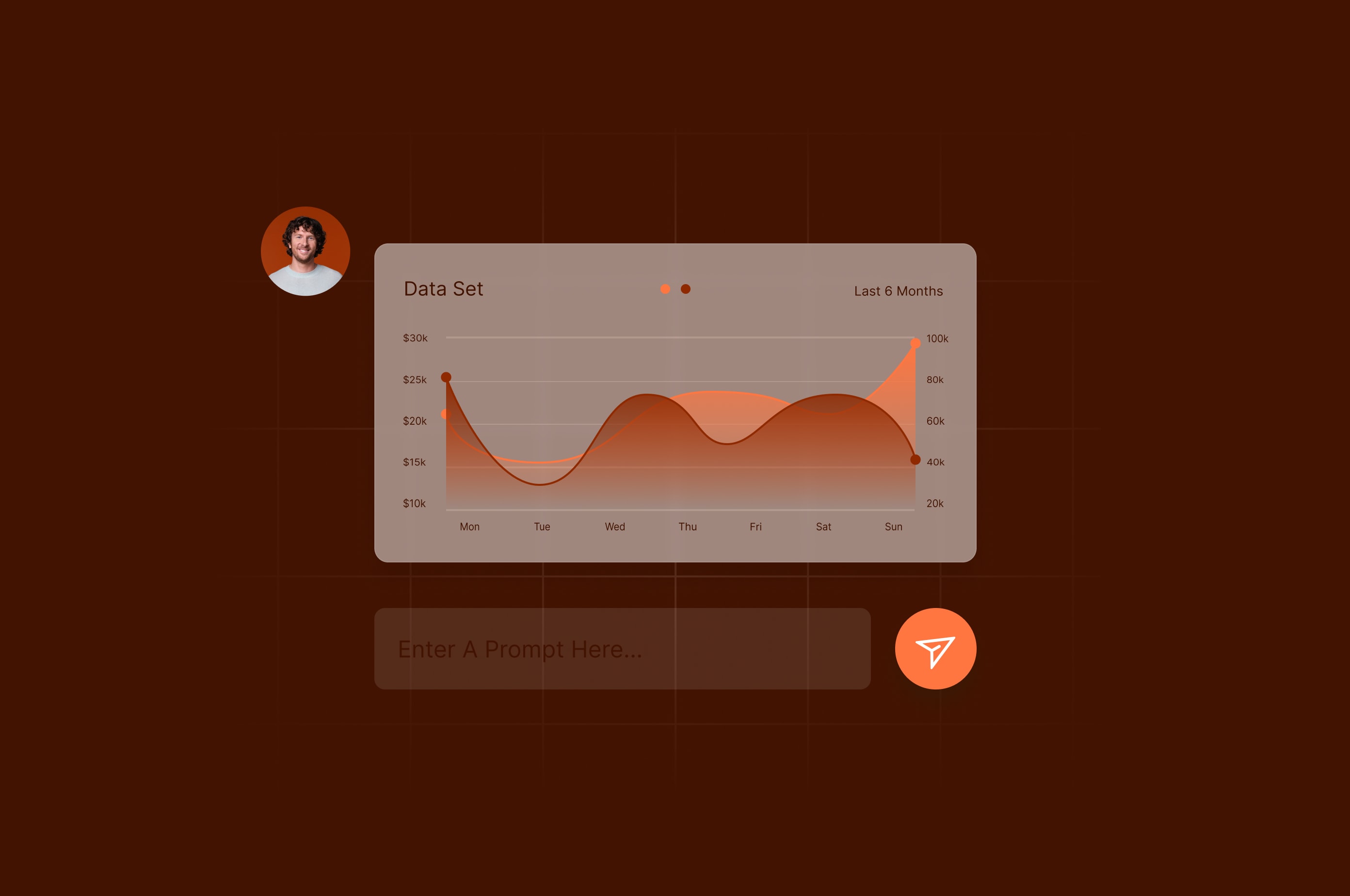What is Data Bias? Causes, Types and How to Avoid Them
Understand data bias and make smarter decisions when hiring data science experts.
 February 6, 2025
February 6, 2025 8 minute reading
8 minute reading
The world is more data-driven than ever. Correct data, properly analyzed, can mean the difference between success and failure.
Unfortunately, human biases can taint the data we use to train AI or power other data-driven solutions. A faulty collection process can also lead to biased data and a degraded decision-making process.
Handing over control to systems that rely on faulty data will lead to systematic errors that perpetuate inequalities. The first step to fixing this problem in the data science world is becoming aware of it. This article will cover what data bias is and how to avoid it.
What is data bias?
Data bias is when the underlying data in a computer system is biased, which skews the system’s output.
A common phrase in computing is “garbage in, garbage out,” meaning that even a perfect computer will output incorrect answers when working with faulty data. Biased data produces biased answers.
Data bias in AI
Soon after ChatGPT and other generative AI tools hit the market, reports emerged about how these tools favored stereotypical outputs. In 2023, Rest of World magazine published an in-depth exposé of how AI image generators had reduced the world to stereotypes. Repeated tests revealed gender, racial, and other biases in their results.
Data bias isn’t a new thing. It has existed as long as there have been databases. However, artificial intelligence (AI) and machine learning (ML) are shining a light on the problem because these technologies require such massive datasets to function.
Machine learning algorithms are all essentially statistical algorithms. If the majority of an AI’s underlying data says that B always follows A, then the tool will typically output “B” when you type in “A” as a prompt.
The above is a simplification, but it illustrates the essential point: Machine learning models with training datasets that contain heavy amounts of cognitive biases against certain demographic groups will lead to potential biases in the model’s output.
The dangers of data bias
Data bias perpetuates systemic inequalities and results in real-world harm, such as unfairly disadvantaging certain groups in hiring, lending, or healthcare.
For example, a study by MIT and Stanford University researchers discovered that facial recognition systems failed to properly recognize darker skin tones because the systems were trained primarily on light-skinned faces.
Types and examples of data bias
Many types of data bias exist. We cover the most common ones below.
Algorithmic bias
An algorithmic bias is a bias built directly into a system’s algorithm.
Sometimes, programmers must modify an algorithm to account for errors in the underlying data. For example, a predictive policing algorithm in Bogotá, Colombia, predicted 20% higher crime than reality when the algorithm detected a high volume of historical crime reports from that area. Unfortunately, the algorithm didn’t account for the fact that certain demographics were more likely to be reported for crime than others, thus skewing the results.
Algorithmic biases tend to mirror and reinforce societal biases. Hiring a data scientist can help you identify and correct algorithmic biases.
Confirmation bias
Humans sometimes favor data that affirms their beliefs and discard data that goes against them. We call this “confirmation bias.”
The popular large language models in use today—ChatGPT, Claude, Llama, and Grok—were all trained on internet data, which is rife with non-journalistic copy. Whereas journalists are held to a strict standard of ethics and must be impartial, bloggers on the internet aren’t, often writing about their opinions and why they’re correct.
The preponderance of opinionated content on the internet makes it a poor choice for impartial training data.
Historical bias
Historical bias occurs when data biases exist in historical data, and then that data is used to train AI models or determine outcomes.
“A real-world example we’ve seen is in sales outreach. For example, if AI relies too much on historical data, it might only focus on a specific customer type, missing other potential opportunities on the table. We've revised this by combining historical trends with fresh, representative data to reach new markets and customers,” says V. Frank Sondors, CEO of Salesforge AI.
Another example comes from an internal AI tool Amazon used for recruiting in 2018. The tool was trained on 10 years of data in a historically male-dominated field, thus skewing hiring recommendations toward male applicants.
Financial models built on biased historical lending data can also perpetuate decades of discriminatory practices, denying opportunities to qualified applicants.
Selection bias
Selection bias occurs when the data selected for training doesn't truly represent the problem or population being modeled.
For example, a developer might actively filter out data from users with strong accents when building a speech recognition system, believing it will improve model performance.
Survivorship bias
Survivorship bias occurs when a dataset contains only the data that has "survived" some selection process.
One of the most well-known examples of survivorship bias occurred in World War II. The American military asked a Hungarian mathematician named Abraham Wald to help them figure out how to prevent planes from being shot down. They knew they had to add armor to the planes, but armoring the entire plane would make it too heavy.
They examined the planes that returned and noticed that most of the damage occurred on the wings and center of the body.
The military failed to account for survivorship bias—they were only examining the planes that had returned. Wald pointed out that the ones that didn’t return were the ones with the areas that needed to be protected.
Availability bias
This bias occurs when we rely too heavily on readily available data, overlooking harder-to-access but potentially crucial information.
Language learning models (LLMs) exhibit this bias significantly. They’ve been trained on readily available internet data, which is mostly Western data written in the English language.
Sampling bias
Sampling bias occurs when the sample data used for training isn't representative of the actual population the model is designed for. Sampling bias is a form of selection bias but is unintentional, whereas selection bias tends to be intentional.
Mark Leher, Director of Product Management at Alkami, provides a hypothetical example of selection bias:
“If you did a survey of the most popular NFL team and you only surveyed people who live in Denver, your results would show that the Broncos are, by far, the most popular team. By only interviewing people in Denver, you’ve introduced a bias towards the Broncos. To more accurately answer that question, you’d need to find a sample of people that represented the relative populations of all the NFL markets, and also include people who live in places where there is no NFL team at all.”
Measurement bias
Measurement bias occurs when the chosen metrics don't accurately capture the real-world phenomenon you’re trying to model.
For example, an online video platform that favors “watch time” as the primary metric to measure user engagement might recommend longer videos for users to watch, not necessarily more enjoyable ones.
Reporting bias
Reporting bias refers to the selective revelation of data by people responsible for reporting it.
The news media is an excellent example of this, with certain outlets favoring one version of news compared to others, effectively suppressing reports.
More biases
More data biases exist. Listing them all in detail would turn this article into a small book.
If you need help determining if your data contains bias, check out Fiverr’s AI consultant, who can help you.
Find an AI expert on Fiverr
How to avoid data bias
Completely eradicating data bias is challenging at best. A more realistic goal is to develop frameworks for data collection and guardrails that help you improve the model’s performance.
You can also build in data-driven metrics that help you spot biased data, such as user feedback for queries. If any type of query repeatedly gets negative user feedback, you can get a data science experts to look into the data points related to that query.
Here are seven steps you can take to significantly reduce data bias:
1. Hire a data scientist
A data scientist can guide you in collecting data, cleaning it, and transforming it into a form that’s usable for your needs. This preprocessing stage is vital to remove outliers from your data sources.
Data scientists can also use programming languages such as Python to write code that looks for anomalies in your data.
2. Establish the right goal
Creating a perfect dataset without any bias is impossible. “The first step is to acknowledge and accept that you can never eliminate data bias completely,” says Leher.
“Every data set created has some sort of bias based on how it was collected. Once you acknowledge this, you can take steps to address or account for the bias. It’s good practice for analysts to consider and document what those biases might be for your datasets up front.”
It’s essential to bring a human-in-the-loop model into play, where humans frequently analyze results and report them when they see biased answers.
3. Improve acquisition procedures
High-quality data acquisition directly reduces bias by capturing a more complete representation of the real-world phenomena you’re measuring. You should write SOPs (standard operating procedures) for data collection and ensure all data collection follows them.
To avoid algorithmic bias, you can test against multiple diverse benchmark datasets. For confirmation bias, you could use independent data collectors who don't know the study’s hypotheses—the expected outcome of the study or trial.
Many other ways exist to improve the acquisition phase, and you can find expert data scientists on Fiverr to help you with these.
4. Implement regular auditing procedures
V. Frank Sondors of Salesforge AI says his company lessens the risk of data bias by running audits at every stage, from data collection to model updates. “Simulations can assess how AI performs across different scenarios, helping identify and fix potential issues that may arise in the actual setting,” he says.
5. Tweak the model to account for the biases
When you can’t easily remove the biased data, you can alter the model to account for those biases.
Kelwin Fernandes of NILG.ai, an AI consulting and software development company, says:
“In most cases, biases are implicit and cannot be easily corrected. Therefore, we should take effective actions to remove the bias in the models. For example, when dealing with a lack of data from a minority group, you can oversample the minority class. In other cases, you can adjust the loss function (the objective of your algorithm) to counterbalance any existing bias in the data. Other practical tips include removing the variables that exhibit the bias from the model's features.”
6. Use stratified sampling
Stratified sampling means dividing your data group into subgroups based on characteristics those subgroups share. The subgroups are called strata.
For example, you might divide people being surveyed into subsets based on their age and then pick a random sample from each subgroup.
Stratified sampling reduces the possibility of sampling bias by gathering data from a balanced group of people.
7. Use data visualization
In some cases, data visualization can help you reveal patterns that are difficult to spot in raw numbers, such as clustering of data points that might indicate sampling bias.
If you need help creating meaningful visualizations, reach out to Fiverr for data visualization services.
Hire an expert
Data bias and data analysis is a sophisticated field requiring expertise and training to do properly. Failing to bring in experts can harm people because every subsequent decision from that system will be biased in a certain direction.
You don’t need to look far for data experts. Fiverr has many expert data scientists and machine learning specialists who can help you accurately collect and process data for your needs.
You can also find experts at building AI models, or data governance servicess to help you ensure your AI models are compliant.
AI is one of this century’s greatest breakthroughs. However, its accuracy depends on data that’s free of bias. Fiverr’s many data experts can help you achieve that.
Getting started on Fiverr is easy. Just sign up for an account and you can have your data ready for action in no time.
Data bias FAQ
What is the meaning of data bias?
Data bias is when human biases enter into the data that data engineers feed computers. This data bias can lead to inequalities and unfairness. Some examples of data bias include confirmation bias, historical bias, sampling bias, and selection bias.
What is an example of bias in data collection?
When collecting data samples for a data model, the data scientist might collect data from a segment that doesn’t accurately represent the model. For example, if you’re trying to determine what fans like in baseball, interviewing basketball fans would introduce sampling bias into your model.
How do you identify data bias?
Data bias can be challenging to identify. It’s vital to have feedback mechanisms in place so people can flag biased data for a data analyst to investigate.
How to avoid data bias?
You can take several steps to avoid data bias, such as auditing your data samples or hiring a data scientist. It’s impossible to eradicate data bias, so you should aim to constantly improve the quality of your data through human feedback and frequent improvements.





